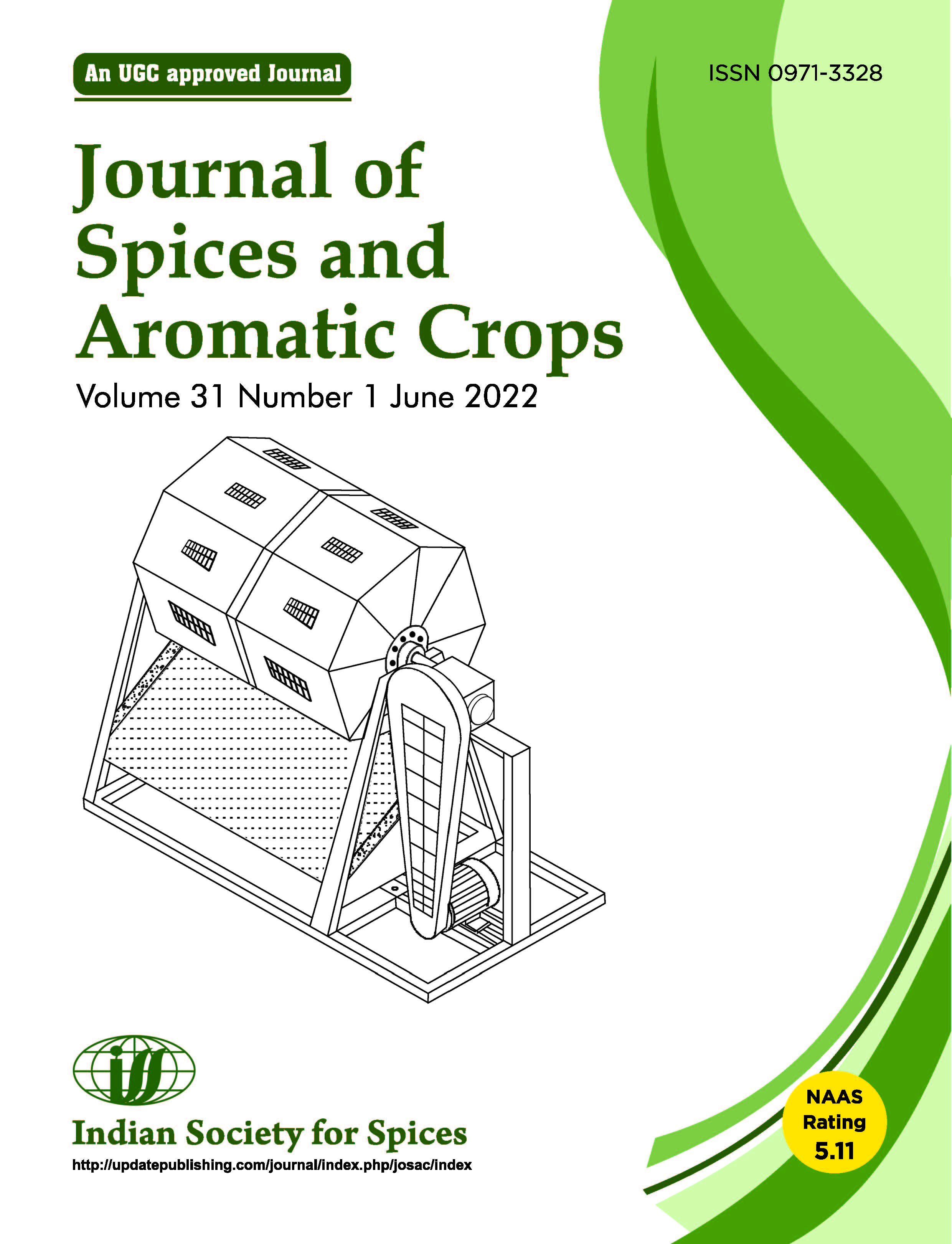Variation in the oil content in different parts of clove bud and from different geographical regions
Oil content in different parts of clove
DOI:
https://doi.org/10.25081/josac.2022.v31.i1.7508Keywords:
clove, essential oil, geographical variation, oil yieldAbstract
This study determined the difference in oil content from separated parts of clove buds, full bud with crown, clove bud without crown and dust (stamen and style), and only crown along with dust from market sample. Results showed that the highest oil content in clove bud without a crown. Oil yield varied in clove buds from different geographical regions wherein, Madagascar showed the highest amount of oil.
Downloads
References
Alfikri F N, Pujiarti R, Wibisono M G & Hardiyanto E B (2020) Yield, Quality, and Antioxidant Activity of Clove (Syzygium aromaticum L.) Bud Oil at the Different Phenological Stages in Young and Mature Trees. Scientifica.
Ben Hassine, D, Kammoun E l Euch S, Rahmani R, Ghazouani N, Kane R, Abderrabba M & Bouajila J. (2021) Clove Buds Essential Oil: The Impact of Grinding on the Chemical Composition and Its Biological Activities Involved in Consumer’s Health Security. BioMed Research International 9940591.
Cortés-Rojas D F, de Souza, C R F, & Oliveira W P 2014 Clove (Syzygium aromaticum): A precious spice. Asian Pacific Journal of Tropical Biomedicine. 4(2): 90–96.
Guan W, Li S, Yan R, Tang S & Quan C 2007 Comparison of essential oils of clove buds extracted with supercritical carbon dioxide and other three traditional extraction methods. Food Chemistry. 101: 1558–1564.
Haro-González J N, Castillo-Herrera G A, Martínez- Velázquez M & Espinosa-Andrews H 2021 Clove Essential Oil (Syzygium aromaticum L. Myrtaceae): Extraction, Chemical Composition, Food Applications, and Essential Bioactivity for Human Health. Molecules. 26 (21): 6387.
Jirovetz L, Buchbauer G, Stoilova I, Stoyanova A, Krastanov A & Schmidt E 2006 Chemical composition and antioxidant properties of clove leaf essential oil. J. Agric. Food Chem. 54(17): 6303–6307.
Kamatou G P, Vermaak I & Viljoen A M 2012 Eugenol from the remote Maluku Islands to the international market place: A review of a remarkable and versatile molecule. Molecules (Basel, Switzerland) 17(6): 6953–6981.
Oliveira R A de, Reis T V, Sacramento C K do Duarte L P & Oliveira F F de 2009 Constituintes químicos voláteis de especiarias ricas em eugenol. Rev. bras. farmacogn. 19(3): 771– 775.
Published
How to Cite
Issue
Section
Copyright (c) 2022 Riya Bhosle, Shraddha Dighe, Drushti Kute, Gopaal Ahuja, Ganesh Ahuja, Kirti Laddha

This work is licensed under a Creative Commons Attribution-NonCommercial-NoDerivatives 4.0 International License.






 .
.